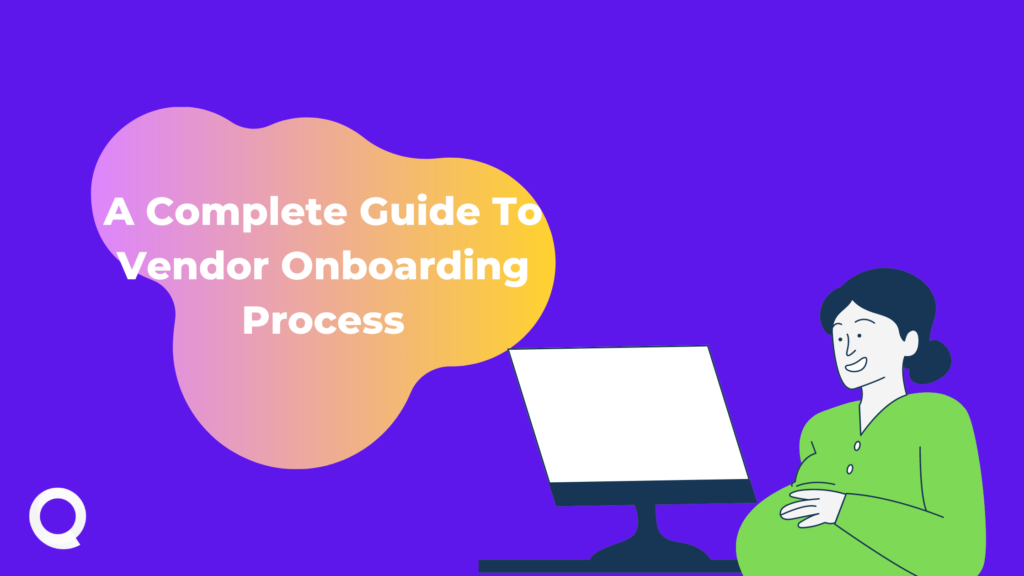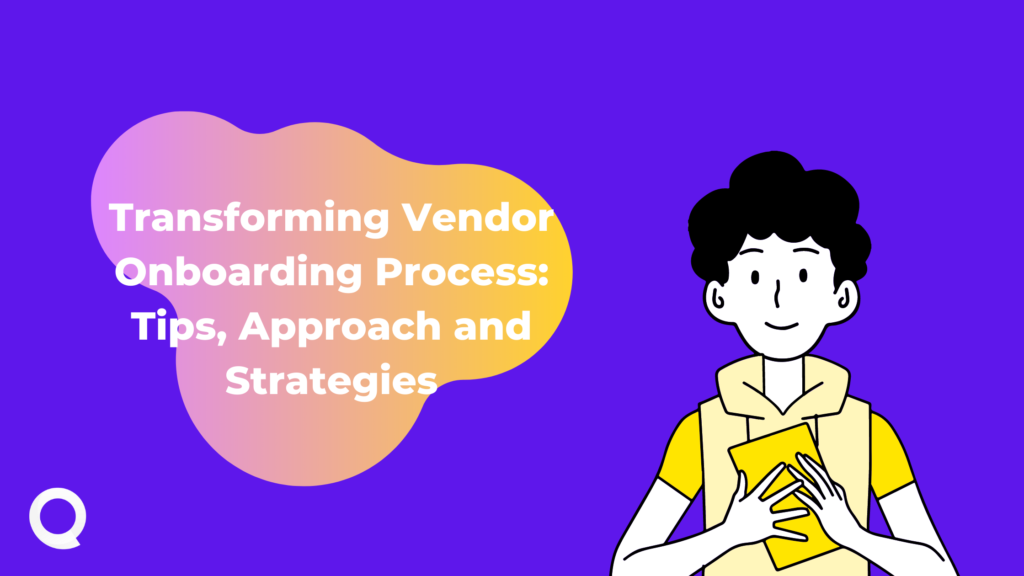Companies with global supply chains depend largely on collaborations with local and regional vendors to offer products and services that successfully satisfy consumer needs. These partner/supplier/vendors are onboarded through a custom designed vendor onboarding process. All of these external Vendors assist businesses in gaining access to markets that would be difficult to create through internal logistics alone.
From order fulfilment to service quality and operational efficiency, your Vendors can help you accomplish it all, allowing businesses to minimize costs and enhance return on investment. You may increase the value of your business network by having good connections with your Vendors.
It might be tough to develop specific processes and data pipelines using manual coding if your company has hundreds or thousands of Vendors. On the other side, if you have a well-established approach to Vendor onboarding, you may minimize complexity, allowing you to onboard suppliers and have a favourable impact on business performance.
What is vendor onboarding?

The process of gathering, verifying, and combining the data and documents required to integrate an external Vendor into your existing business data ecosystem and establish a commercial relationship with a vendor or supplier is known as vendor onboarding.
When properly applied, it may assist you in simplifying your management Vendor and conducting business with that firm. Both parties should set up an effective data exchange and communication system to ensure timely collaboration and transparent administration of relevant activities and projects.
By ensuring that your Vendors fulfill your quality requirements, a solid B2B endor onboarding procedure may help you prevent fraud vendors. By implementing governance, compliance, and data validation processes, the risk is reduced.
Advantages of automated vendor onboarding

According to CSO Insights, roughly 63.5 percent of businesses feel their Vendors contribute to their annual income. Many businesses, however, overlook the significance of a planned Vendor onboarding process because they underestimate its advantages.
However, in actuality, it may have a positive impact on your company’s success because:
Maintains governance and compliance
Vendor onboarding guarantees that your Vendor complies with all internal and external policies and regulations. You don’t have to worry about paperwork when you add a new Vendor using an automatic data integration solution. You can easily run automated checks on third-party databases to confirm the provider’s existence and authenticity.
Decreases transactional load
A B2B Vendor integration solution minimizes your internal teams’ transactional strain. Your internal users are no longer responsible for data collection and input. Vendors can utilize a data integration platform to extract data from multiple sources, match formatting with your internal systems, and powerless data in an automated process.
Increase your productivity and cooperation efforts
You may rapidly seek, receive, confirm, and accept data from potential Vendors by utilizing a Vendor integration solution. This is because it removes the requirement for specialized IT employees to maintain and repair broken pipelines and eliminates the need for manual coding of separate data pipelines for each vendor. As a consequence, by gathering and maintaining Vendor information and files inside a streamlined data management framework, it is able to accelerate, standardize, and simplify onboarding operations.
Also Read: Transforming Vendor Onboarding Process: Tips, Approach and Strategies
The Difficulties of Vendor Onboarding

According to IBM, more than 70% of companies report that their IT team is struggling to handle the number of suppliers they must enrol and maintain. Effective channel Vendor onboarding may help enhance Vendor engagement, increase revenue, and decrease pressure. However, the failure to get off to a good start with new Vendors can lead to many people leaving sooner.
Some of the most significant issues connected with channel Vendor onboarding are as follows:
Vendor onboarding by hand
Many businesses establish inefficient manual onboarding procedures that overburden IT personnel. To collect, validate, and standardize Vendor data, your IT staff must develop manual methods.
These procedures frequently fail when the Vendor modifies the format of their inputs or switches to a different platform. When data validation tests fail due to differences in the receiving data, problems might emerge.
Difficult legacy infrastructure
Many businesses often add modification and manual processes to their old systems as their Vendor network increases. Essentially, outdated systems are unsuitable for connecting to various sources and necessitate the use of middleware to combine data, as well as substantial coding work.
This creates an excessively complicated environment, requiring IT intermediates to manage incoming data and monitor the assessment provider’s key performance metrics
Backlogs for onboarding
When suppliers provide alternatives to source data, such as Vendorship agreements, contact information, rights, responsibilities, or connectivity requirements, data flows are sometimes disturbed because the source formatting has changed.
The data flow will have to be manually updated and conformed to the new source layout. Identifying where errors occur is also a time-consuming job. Staff must contact and email IT to inquire as to why the procedure is taking so long, thus slowing down the process.
At the outset of this chain of issues, integration delays occur, disrupting continuing information flow and resulting in order processing delays and poor customer service.
Vendor onboarding best practices
A structured approach to Vendor onboarding assists companies in reducing process complexity, onboarding Vendors rapidly, and achieving better business results. Some of the top software integration practices are:
Making the vendor onboarding process more automated
Companies utilize a specifically built data integration technology to construct data pipelines to gather, evaluate, and manage all inbound data and file providers to address the challenges of manual Vendor onboarding.
Organizations may use an end-to-end data integration platform to create an automated Vendor integration data framework that cans onboard all new suppliers and vendors without the need to write long SQL scripts. Because of native connection to data sources, this saves the business from complicated and diversified integrations.
These technologies aid in the development of autonomous and self-regulating integration processes. Reduces onboarding timelines to hours rather than days or weeks, resulting in timely information for successful cooperation.
Increasing transparency and visibility
Visibility is critical during your Vendor onboarding process because it creates the groundwork for data insight that will benefit your efficiency for years to come. If you want to maintain healthy and successful relationships with your Vendors, you must maintain a high degree of openness throughout the onboarding process.
The visibility of data given through monitoring, reporting, and alert notifications, is an excellent method to keep all important stakeholders up to date. Through self-service supplier portals, a data integration tool gives near real-time visibility, enabling rapid tracking and reporting of shipment status, payment cycles, inventory information, and production schedules.
Integration has been simplified
Using an enterprise-grade data integration tool, your IT team can integrate multiple Vendor systems, such as cloud databases, web applications, and other online platforms, into the business using API. You no longer need to manually set up connections for each provider, which ultimately translates into faster turnaround times.
One can use automated solutions to reduce Vendor onboarding time by 75%. This translates into a significant advantage: Your business can gain accurate and timely insights from Vendor data collected across the enterprise, thereby improving cash flow and producing more investment work quickly.
Conclusion
Quick and effective onboarding of new Vendors is an essential ability that distinguishes your company as one that can form successful Vendorships. Using a powerful data integration platform can allow you to interact with your important Vendors faster than your competitors.
Quickboarding is an end-to-end data integration platform that offers a full collection of tools for automating the extraction, transformation, and integration of Vendor data. Its robust and simple-to-use drag-and-drop p enables platform organizations to develop repeatable and good Vendor onboarding processes in hours.


